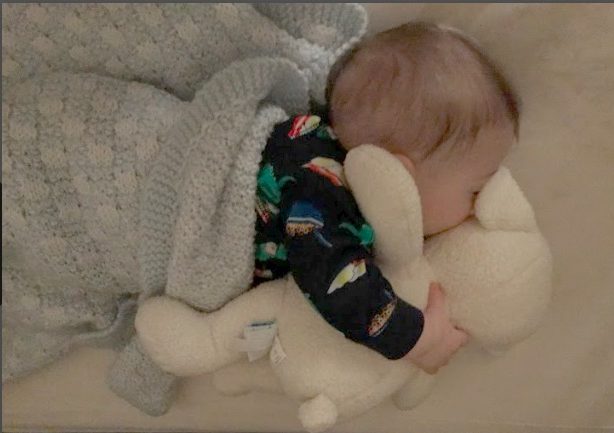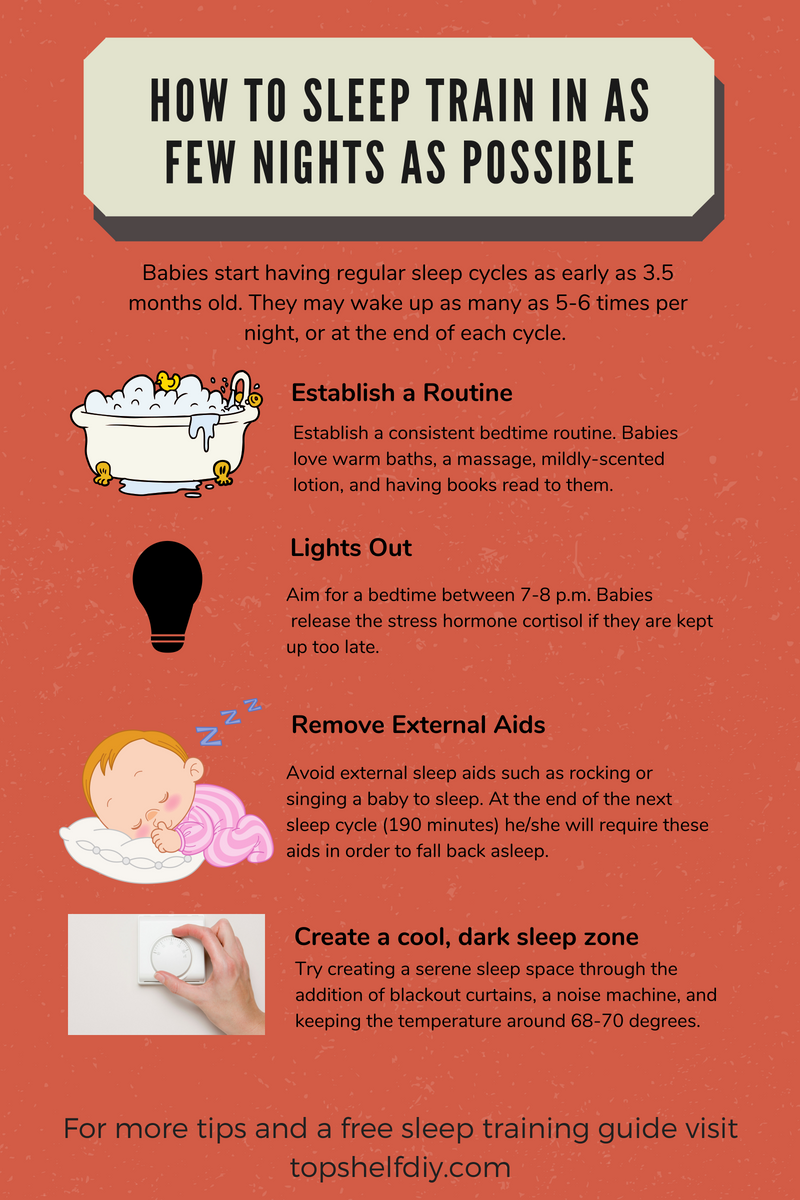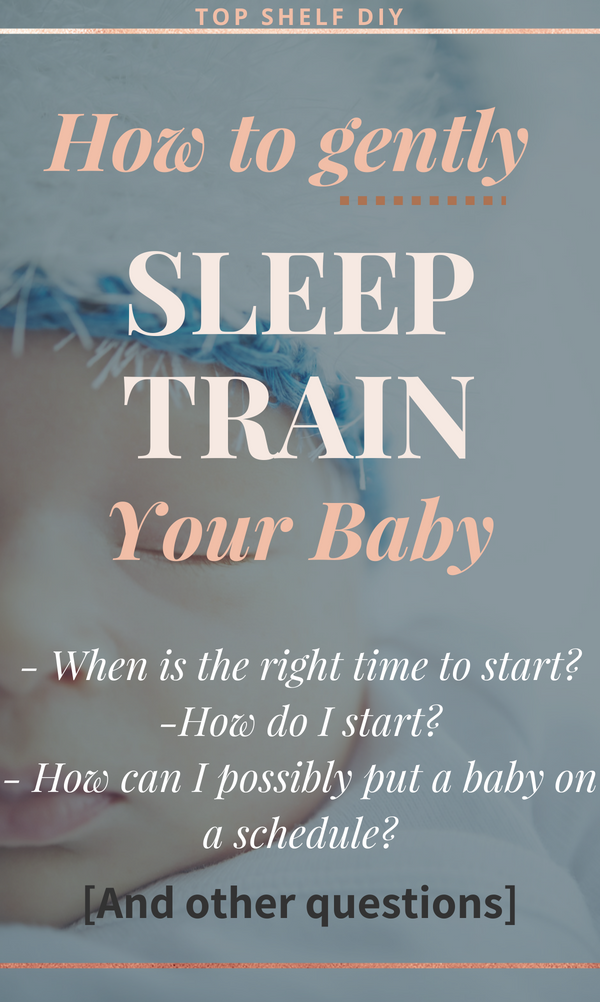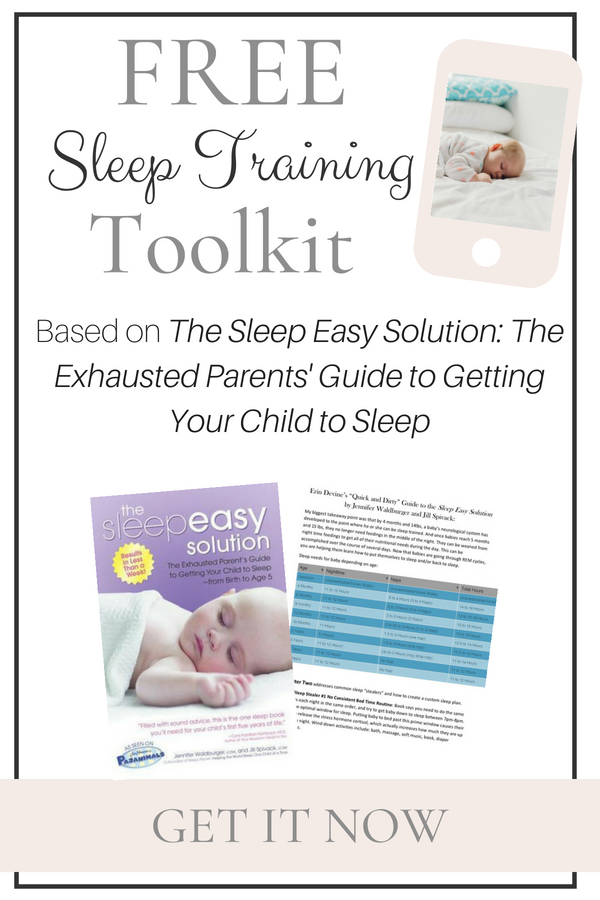...And How We Did It.
If you’re reading this and just hit the four-month sleep regression, you’ve probably noticed a few things:
- Your son/daughter no longer sleeps through everything, including loud ambient noise.
. - Your child is waking up in the middle of the night again. And here you thought those days were over!? *distant weeping*
- Your child has a harder time napping during the day. Unless you do certain things like rock them/sing to them/feed to them, he or she doesn’t stay asleep.
. - Your child is more easily distracted and doesn’t eat as much during the day. As a result, he/she ends up being hungry a lot in the middle of the night.
.
Coffee, mama. Deep breaths and lots of coffee.
I was beside myself when Evan hit his four-month regression (he's almost 2 now). Really. I breastfed Evan, so it was alllll me running the late-night show. I was so tired that I sometimes felt physically ill from the sleep deprivation.
I thought I was going crazy until I learned all of my mom friends in Evan’s age group were going through the same thing.
Here’s the REALLY good news: it doesn’t have to stay like this. Where there’s a will, there’s a way.
Enter: The Sleep Easy Solution: The Exhausted Parent’s Guide to Getting Your Child to Sleep from Birth to Age 5. The book is written by Jennifer Waldburger and Jill Spivack, two sleep experts who made a name for themselves catering to celebrity babies.

It’s like the bible of the mommy circuit underworld. It’s your lifeline back to the land of the living.
This is not a sponsored post. I got the book from a mom who had major success with it, and she got it from another mom who swore by it.
It was a total game changer for us. To this day my husband says sleep training was the best thing we ever did. I agree.
Now I'm probably going to get a lot of flack from this post because sleep training is controversial. A lot of moms correlate sleep training with the Cry It Out method. They envision babies screaming at the top of their lungs for hours on end, which is absolutely not what I advise.
While CIO is one possible way to sleep train, the methods discussed in this book are more strategic than that.
Hear me out. Especially if you’re ready to get some semblance of control over your schedule again. Evan was sleeping through the night within three days of implementing this book. Three days!
Why Sleep Regression Happens
If it’s any consolation, know that sleep regression is actually sleep progression. Your baby's brain development is progressing. As babies develop, they start having regular 60, 90 and 120-minute sleep cycles. It’s actually a good thing to be having normal cycles, even though we may not fully appreciate this development at first!
Babies’ little systems start releasing higher levels of melatonin, meaning they can start having NON-REM sleep cycles. This is the part of our sleep when our muscles are most relaxed.
Stage One (N1):
Light sleep. Lasts only a few minutes.
Stage Two (N2):
A slightly deeper sleep. Your brain experiences a sudden uptick in activity and then slows down.
Stages Three and Four (N3):
A deep sleep. No rapid eye movement (NON-REM). This is when your body shifts into repair mode and releases human growth hormone. Cell turnover stimulates muscle and tissue regeneration. Deep sleep equates to more energy, learning power and improved immune function the next day.
REM Sleep:
Begins about 90 minutes after falling asleep and will occur 5-6 times per night. Your brain becomes more active and you experience dreams while your eyes literally shift back and forth. Your brain consolidates memories and events from the day. It’s also the time we rejuvenate our emotional health and creative problem-solving abilities.
As you can see, amazing things happen while we sleep!

Unfortunately, a brief wake period occurs at the end of a sleep cycle. If your baby is used to having external associations in order to fall asleep (food, rocking, singing), he or she will require these activities (wake up, mommy!) in order to fall back asleep.
A key tenet of sleep training is removing these external requirements so your baby can naturally fall back asleep after having 5 or 6 nightly sleep cycles. More on this later.
.
Is My Baby Ready for Sleep Training?
According to Waldburger and Spivack, sleep training can begin as soon as your baby is 4 months and 14 pounds. By this point babies’ brains are developed enough to respond to sleep conditioning. Also, they no longer require nighttime feedings to meet their daily caloric requirements.
Obviously if you are seeing some of the telltale signs mentioned at the beginning of this post, your timing is right on.
Yippee!
.
How Much Sleep Does My Baby Really Need?
Before I delve right into the details, it may help to know how much sleep your baby actually needs.
The Sleep Easy Solution includes detailed grids listing sleep requirements for kids up to 5 years old.
Four-month-olds need 11-12 hours of sleep per nightand 3-4 hours of sleep during the day.
We noticed our son started his regression early -- at about 3.5 months. Technically, we could have started the process sooner, but we didn’t catch on until he was 4 months old. By the end of our training, Evan went from waking up 1-2 times in the middle of the night to sleeping 12 hours a night.
.
How Does Sleep Training Work?
What I really love about this book is that it’s a quick read. The authors outline a couple of key themes to keep in mind as you go:
- Consistency and routine are key. Sticking to a schedule will help you stick with the plan AND help your baby fall asleep at roughly the same times every day.
. - Keep track of your sleep and wake times. It will help you chart your progress and make adjustments as you go. The book includes charts to follow, which can be accessed here: Sleepy Planet Excerpt from The Sleep Easy Solution
. - Be strong. You’re essentially training your baby to put himself back to sleep. It’s akin to letting your kid ride a bike without training wheels for the first time. It’s hard to hear your baby cry, but eventually it gets better!

Here are the simple steps to follow when sleep training:
- Set up a station near the child’s room where you have a clock, pen, sleep planner notes, sleep chart, baby monitor, etc. That way you can keep track of when baby went down and check in on him if need be.
. - Follow a consistent bedtime routine (bath, story, etc). If you start doing things the baby associates with sleep (rocking, feeding, etc) DO NOT let him fall asleep.
. - Put baby in the crib at least all or partially awake so he learns how to put himself to sleep. Baby will cry, so brace yourself with a glass of wine or chocolate. It also helps to give the baby a “lovey” that she associates with sleep. We have a Lambie for Evan and it works like a charm.
. - Leave your baby alone for at least five minutes. If he’s still crying, check in at 5, then 10, then 15 minutes. Don’t touch your child, which will tease him into thinking you’ll help him sleep. Use a calm, loving tone of voice as you support him.
. - Once baby falls asleep, record the amount of time it took him or her to do so (this should decrease with time!). If you decide to go to sleep, bring a sleep log or piece of empty paper with you to track baby’s wake times.
You’ll want to make sure your baby’s room is fairly dark with some kind of white noise machine running. Put away any playtime distractions.
Bedtime should happen between 7 and 8 pm to prevent your baby from releasing the stress hormone cortisol, which stimulates their system and causes more frequent night-time wakings.
How to Wean a Breastfed vs. Formula Fed Baby
Keep a log of what times he or she is eating and for how long in the middle of the night. Your goal is to gradually reduce these feeding times to the point where you can eliminate them entirely.
Let’s say your feedings have been as follows:
8pm – bedtime
11pm – breastfeed 10 mins
1am – breastfeed 2 mins
2am – breastfeed 2 mins
3:30am – breastfeed 8 mins
7am – wake time
You’ll want to wake baby one hour before she wakes and feed her. You’ll reduce the eating times by 2 minutes each night. The 1am and 2am feedings are more for pacifying than eating so these feedings can be eliminated altogether.
Night Two will look like this:
10pm– wake baby (one hour before she normally wakes) and feed for 8 mins (two mins less than normal). This what the authors call a “dream feed.”
2:30am– wake baby for second dream feeding (one hour before 3:30am feeding) and feed for 6 mins (two mins less than normal).
Going forward, feeding times will continue to happen at 10pm and 2:30am, but you’ll keep reducing the amount of time that is spent feeding your child until they are eliminated altogether.
Weaning with formula is the same process, except instead of timing your feedings you’ll actually reduce the ounces of formula given as you go forward.
Great idea, right? I remember feeling terrible when I had to wake up my son to feed him in the middle of the night. But honestly, he was basically eating in his sleep. It didn’t bother him one bit!
After two or three nights of dream feedings Evan was sleeping through the night like a champ!

Co-sleeping, older children, and other nuances
There are many other caveats discussed in the book, such as how to sleep train while co-sleeping, how to sleep train older children, and how to consolidate naps as your baby gets older.
I highly encourage you to read the book for more juicy details regarding these specific situations!
Another caveat: your baby’s schedule may be disrupted during teething and developmental milestones (Crawling, walking, etc.). This is totally normal.
I hope this overview gives you a good idea as to how to move forward. Honestly, sleep training saved my mental and physical health. I was able to go back to work at my night shift job knowing that Evan was sleeping soundly through the night.
In case you'd like a checklist summation of this blog post, I've created a PDF file available for upload below.
At the end of the day only you can decide what works best for you. Sleep training may not be the best option if it's going to cause too much emotional distress.
Sleep is incredibly important -- but so is your sanity!
Best of luck and happy training~








Wow - 14 pounds? I've always heard only about the age. I don't have problems with sleep anymore (resolved it quickly with this book: https://sleepingshouldbeeasy.com/newborn-fighting-sleep/ ) but I like reading about different methods. I've had a try with Ferber's method but I believe that CIO methods are not for me. Too much crying causing pressure. Don't you have a problem like this? I'm not talking about the judgment, just does it really feel ok?
With the sleep easy solution method my first son really didn't cry that much! He cried during the day, for about 5-10 minutes tops, for the first 2 days as we were establishing consistent nap times. At night I did a dream feed (waking him an hour early to feed) and so we never had to make him cry it out at night. He would just sleep through the rest of the night after the dream feed. After 2-3 nights with a dream feed, he was able to sleep through the night without any feedings. It was amazing!
My second son, however, was a completely different story. The methods outlined in the book didn't work because he had undiagnosed reflux. It was difficult to make him cry it out for very long because something was clearly wrong. He was in pain. He couldn't tolerate lying flat for extended periods of time. As much as we all like to swear by one method, you really have to just use your best judgment and figure out what works for you! Just like what you did. And let a pediatrician know if something seems off. My reflux baby was exhibiting a lot of unusual symptoms in addition to the night time wakings; the night time screaming was a big red flag. Glad you found something that worked!
Dream feed is one of the best I've learned about the baby! This and Susan Urban's sleeping tips from her book: https://www.parental-love.com/shop/baby-sleep-training - short but have all of the essentials. I've been following her tips since week one and I am totally satisfied with the effect for now. And it's totally for busy people - an hour to read, and less than a week to see a full success!
That's awesome Alison! When we're at this desperate stage we're all about the quick read! I'm glad you found another resource that helped. I also read The Secret to Becoming Babywise, lots of great information in there too, and written by pediatricians.
I love Susan's HWL! Although I used it at 8mo. I wish I knew it sooner! But it worked out just great for us. I never thought about sleep training before because of CIO methods and it's popularity I guess... But HWL is like the whole different world of sleep training!
Thank you Alison for sharing the link! I bought this ebook and my life has changed. It is a pity that so few parents undertake to teach their children to sleep. Everyone thinks it has to be like this, that it's natural and those first years are so difficult for them. It turns out that it doesn't have to be this way. I am the best proof of this. Thank you again
So glad it helped you too!